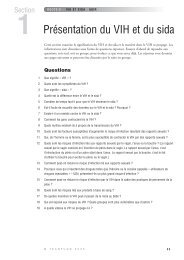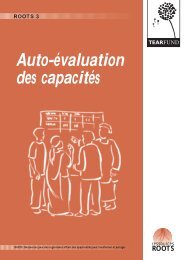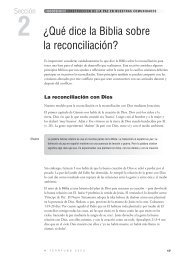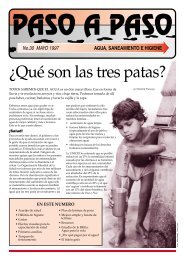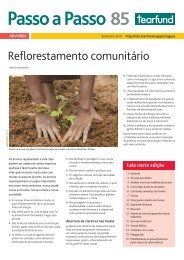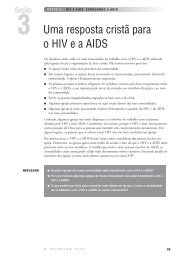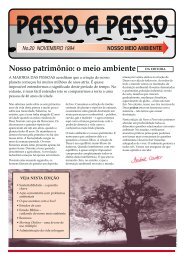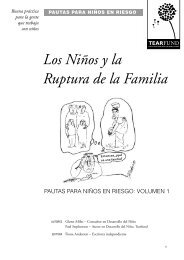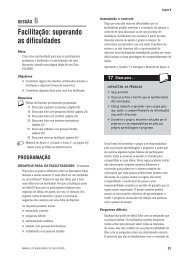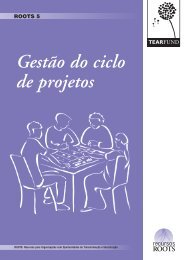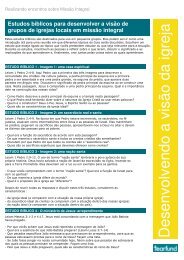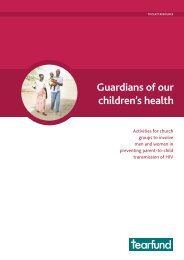Children and Family Breakdown - The Tearfund International ...
Children and Family Breakdown - The Tearfund International ...
Children and Family Breakdown - The Tearfund International ...
You also want an ePaper? Increase the reach of your titles
YUMPU automatically turns print PDFs into web optimized ePapers that Google loves.
CHILDREN AT RISK GUIDELINES<br />
■ Budgeting advice/classes. Credit <strong>and</strong> savings schemes. This problem has been<br />
hidden in First World countries because the anonymity of large churches often<br />
hides issues such as personal debt. <strong>The</strong>re is no space to discuss these kind of areas<br />
of concern. Cell groups in churches are changing this.<br />
■ Drop-in centres such as a café for parents to make friends <strong>and</strong> get informal<br />
support/advice/information with programme workers, help with filling out forms<br />
<strong>and</strong> later, if necessary, counselling <strong>and</strong>/or referral to other resources <strong>and</strong> possibly<br />
introductory Bible study.<br />
■ Literacy/numeracy classes for parents with poor literacy skills <strong>and</strong>/or language<br />
classes for ethnic minorities so they can in turn help their children with school<br />
work <strong>and</strong> bridge the gap between generations.<br />
■ <strong>Family</strong> activities <strong>and</strong> outings.<br />
■ Shelter for women <strong>and</strong> children experiencing domestic violence.<br />
■ Shelter for pregnant teenage girls wanting to have their babies but unable to stay<br />
with their families.<br />
■ Child spacing clinics or referral to the same to promote smaller families <strong>and</strong> to<br />
prevent abortions.<br />
<strong>The</strong> types of projects will vary according to the circumstances. For example in the<br />
United Kingdom, inner city areas have high unemployment <strong>and</strong> many families have<br />
only one parent <strong>and</strong> a poor extended family network. Families in rural parts of<br />
developing countries may have large extended families but lack information <strong>and</strong> support<br />
on many issues. Urban areas in developing countries may have more in common with<br />
cities in developed countries than with rural areas in the same country.<br />
Projects that seek to help children who are separated from their family for whatever<br />
reason might like to look at <strong>Children</strong> at Risk Guidelines 5 on children in residential<br />
care <strong>and</strong> alternatives. <strong>Children</strong> in conflict <strong>and</strong> war situations are considered more in<br />
<strong>Children</strong> at Risk Guidelines 6.<br />
VOLUME 1: CHILDREN AND FAMILY BREAKDOWN<br />
19



